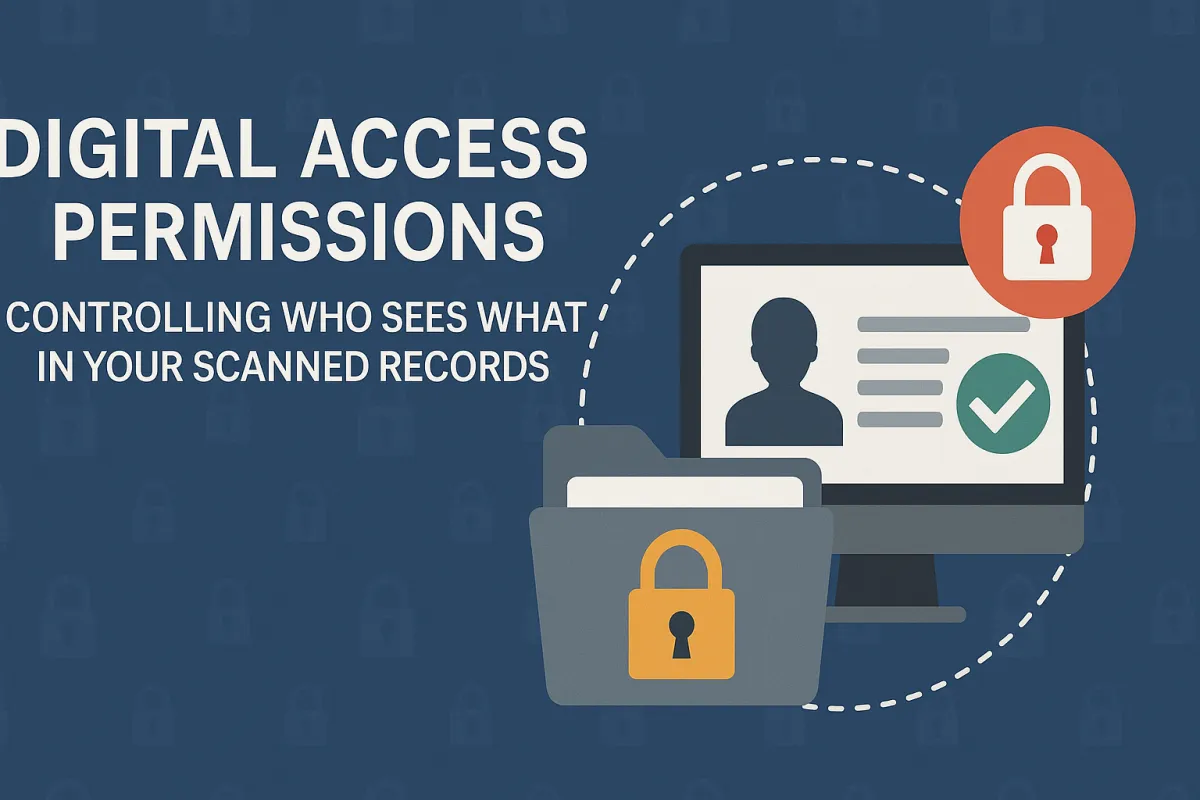
Digital Access Permissions: Controlling Who Sees What in Your Scanned Records
By: USA IMAGING, Inc.
When businesses transition from paper records to digital archives, one of the first concerns is security. It’s not just about protecting data from external threats—it’s about controlling who inside your organization has access to what information. A well-structured access permission system is the key to balancing convenience with security.
Why Access Permissions Matter
Digital access permissions ensure that sensitive information stays in the right hands. In traditional paper systems, files could be misplaced, borrowed without authorization, or viewed by anyone walking into a file room. Digitization allows for controlled, trackable access—something physical records could never guarantee.
Types of Access-Level Security
Role-Based Access Control (RBAC): Permissions are set based on job functions. For example, HR may access employee records, while finance can see tax documents.
User-Specific Permissions: Individual logins can be customized so each employee only sees what they need to do their job.
Tiered Access Levels: Documents can be categorized by sensitivity—general, confidential, highly confidential—with rules on who can open, edit, or share them.
Temporary Access: Time-limited permissions are useful for contractors, auditors, or short-term projects.
Benefits for Businesses
Compliance Assurance: Industries bound by HIPAA, FERPA, or GDPR benefit from strict access rules that demonstrate compliance.
Reduced Risk of Data Breach: Limiting exposure minimizes the chance of insider leaks or accidental disclosure.
Audit Trails: Every action—viewing, editing, or sharing—is logged, giving companies full visibility over document usage.
Improved Efficiency: Employees can find and use the records they need without delays, while sensitive files remain protected.
Setting Up Access Permissions the Right Way
At USA IMAGING, Inc., we don’t just digitize your documents—we help you create a secure digital environment. Our team works with your organization to:
Define user roles and responsibilities.
Establish secure file repositories with built-in permission layers.
Implement audit trail systems for accountability.
Provide training so staff know how to safely access and manage digital records.
The Bottom Line
Digitization isn’t just about making documents easier to find—it’s about making sure the right people can access them, and only them. With a structured access control system, your business achieves the balance of security, compliance, and usability.
